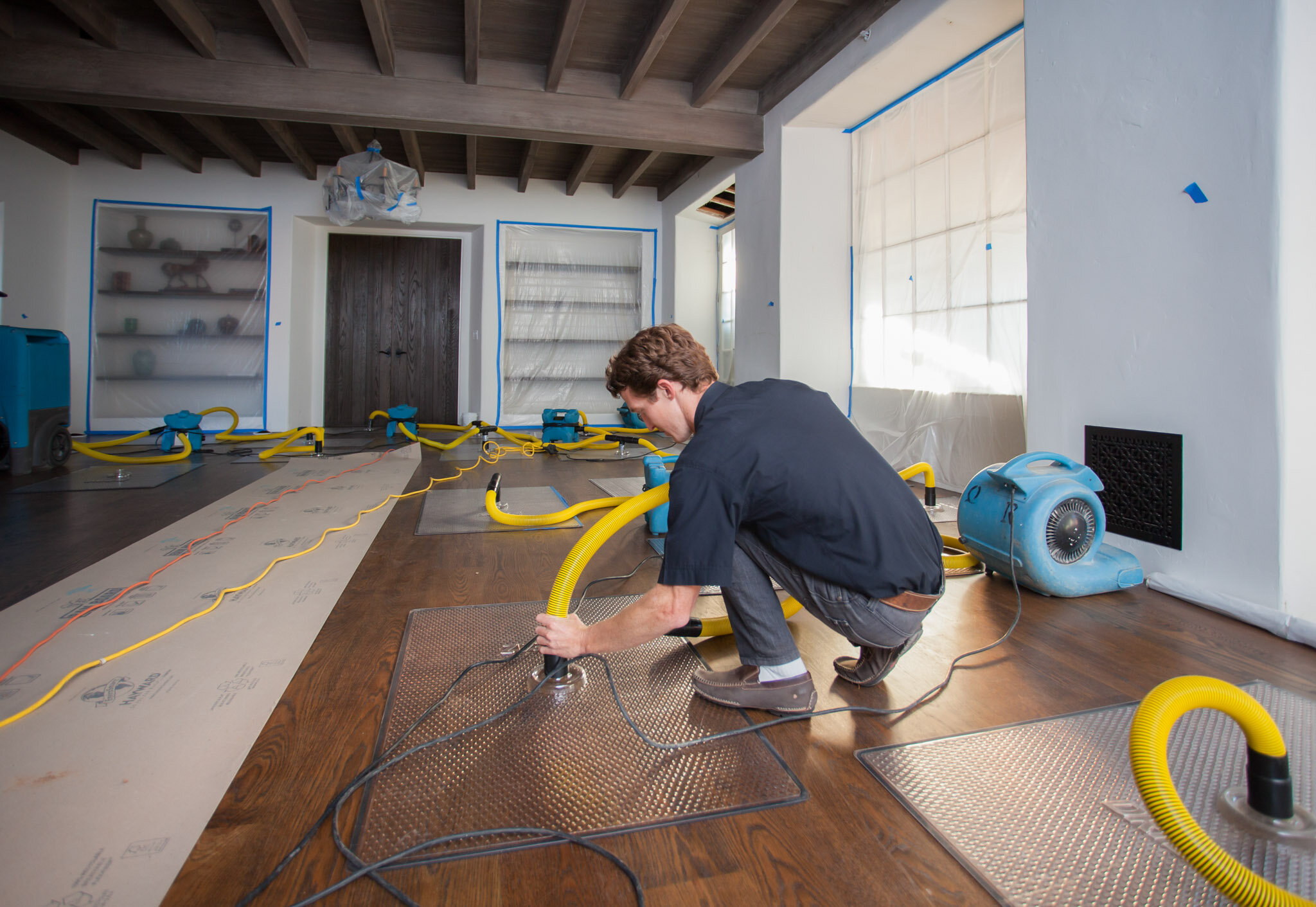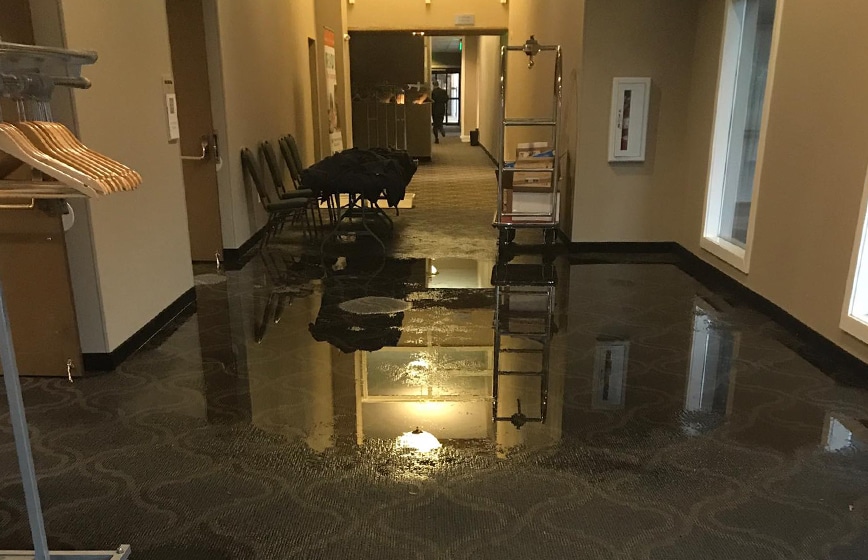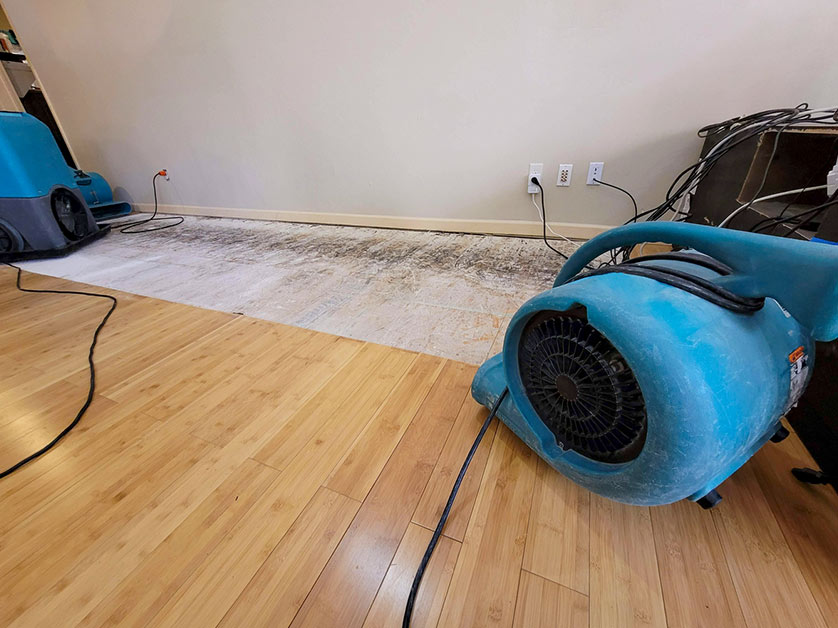A practical overview to Water Damage Restoration processes
Wiki Article
Water Damage Restoration 101: Comprehending the Process and Expense
Water damage can strike suddenly, leaving property owners in a state of complication. Recognizing the reconstruction process is necessary for effective recuperation. From reviewing the damage to choosing the ideal provider, each action impacts the overall outcome and cost. Factors such as the kind of water damage and urgency additionally play a considerable function. What are the certain methods utilized in repair, and exactly how can one get ready for prospective expenditures?Types of Water Damage
Water damage can arise from different sources, each providing special obstacles for repair. The 3 main sorts of water damage are categorized based upon contamination degrees: clean water, grey water, and black water. Tidy water originates from resources like busted pipelines or rainwater, posing marginal wellness dangers. Gray water, which includes wastewater from sinks or cleaning makers, includes contaminants that might trigger discomfort or ailment if ingested. Black water, one of the most unsafe classification, comes from sewer or floodwaters, including damaging bacteria and virus. Each kind demands details repair techniques and safety and security procedures to efficiently reduce and address the damage health and wellness risks. Comprehending these differences is necessary for property owners and specialists involved in the water damage repair process.Preliminary Evaluation and Inspection
A complete initial assessment and assessment are important action in the water damage repair process. This stage starts with a specialist evaluating the degree of the damage, determining the resource of the water intrusion, and determining the kind of water entailed - Water Damage Restoration. Specialists use specific devices to determine wetness levels in different materials, such as walls, floorings, and furnishings. In addition, they analyze architectural honesty and possible health and wellness threats, consisting of mold and mildew growth. The searchings for from this examination inform the remediation plan, guiding needed actions and resource allotment. Precise documentation of the damage is necessary for insurance cases and future recommendation. Generally, this preliminary assessment lays the groundwork for reliable repair, making sure an in-depth action to the particular situation handy

Water Removal Methods
Following the initial assessment, reliable water removal techniques are employed to reduce damage and avoid further concerns. These methods include making use of specialized tools such as industrial-grade vacuum cleaners and completely submersible pumps. The option of method relies on the quantity of water present and the kind of products influenced. For standing water, submersible pumps are generally made use of for fast elimination, while vacuums are ideal for removing water from rugs and furniture. Furthermore, progressed techniques like water removal mats might be employed for hard-to-reach areas. The objective is to remove as much water as feasible, decreasing the possibility for mold development and structural damage. Trigger and efficient water extraction is crucial in the general water damage reconstruction process.Drying Out and Dehumidification Process
When the water removal is full, the drying and dehumidification process comes to be essential to recovering the affected area. This phase normally utilizes industrial-grade dehumidifiers and air moving companies to properly minimize dampness degrees. The dehumidifiers attract moist air, eliminating excess moisture, while air movers circulate air to speed up dissipation. Surveillance equipment is typically made use of to track moisture and temperature degrees, guaranteeing suitable drying conditions. The duration of this procedure can differ relying on the level of the water damage and ecological variables. It is vital to thoroughly dry all impacted materials, including walls, flooring, and furnishings, to avoid mold growth and structural damage. Appropriate execution of this step is vital for an effective restoration end result.Cleaning Up and Disinfecting Afflicted Areas

First Evaluation and Inspection
Prior to starting any type of repair initiatives, a comprehensive first evaluation and evaluation of the affected locations are crucial for efficient cleaning and disinfecting. This procedure includes identifying the degree of water damage, establishing the source of the water breach, and examining the products impacted. Assessors generally try to find signs of mold and mildew development, structural stability concerns, and damaged items. The assessment likewise consists of checking wetness degrees making use of specialized devices to assure no hidden water pockets remain, as these can lead to additional difficulties. Documenting the findings is vital for intending the following steps in the remediation process. An in-depth first assessment allows reconstruction specialists to develop a targeted method for efficient cleansing and disinfecting, inevitably minimizing damage and health risks.Cleaning Up Methods and Products
Efficient cleaning and sterilizing of water-damaged areas need a range of products and techniques tailored to the specific products influenced. For permeable surface areas like drywall and carpeting, extraction approaches are vital to eliminate excess wetness, basics complied with by deep cleaning with specialized detergents. Non-porous products such as floor tile or steel can be cleaned up utilizing commercial-grade cleaners that efficiently remove contaminants. Steam cleansing is one more efficient technique, specifically for carpetings and furniture, as it uses heats to get rid of germs and mold and mildew. Furthermore, eco-friendly items are significantly prominent for their safety and efficiency. Eventually, selecting the ideal cleansing methods and items not only guarantees prompt tidiness but additionally aids in protecting against additional damage and health and wellness hazards connected with water intrusion.Sanitization and Disinfection Approaches
When dealing with water damage, appropriate sanitization and disinfection methods are necessary to assure the security and health and wellness of the afflicted environment. After initial cleansing, surface areas should be treated with suitable disinfectants to remove microorganisms, mold, and microorganisms that prosper in damp problems. Common approaches include the use of EPA-approved chemical anti-bacterials, which can be applied with splashing or wiping methods. In addition, ultraviolet (UV) light systems can efficiently disinfect areas by reducing the effects of microbes without extreme chemicals. The selection of approach typically depends on the sort of materials influenced and the degree of contamination. Inevitably, detailed sanitization not only recovers a risk-free living room but additionally helps stop future wellness risks associated with remaining wetness and mold and mildew development.
Fixings and Restoration Options

Variables Affecting Restoration Expenses
The degree of water damage straight impacts the remediation costs homeowners can anticipate to incur. Variables such as the resource of the water, the duration of exposure, and the affected products considerably affect pricing. For example, tidy water damage from a broken pipe is usually less costly to bring back contrasted to damage brought on by sewage. In addition, the level of contamination determines the requirement for specialized cleaning and disposal solutions, further raising expenses. Geographical place additionally plays a function, as regional labor prices and availability of reconstruction services can differ. The necessity of the reaction influences costs; quicker treatments typically lead to reduce total expenses by stopping further damage. Understanding these factors is vital for homeowners when estimating restoration pricesThe 3 main types of water damage are classified based on contamination levels: tidy water, grey water, and black water. A detailed initial assessment and examination are essential steps in the water damage restoration process. For standing water, completely submersible pumps are commonly made use of for quick removal, while vacuums are ideal for removing water from rugs and furniture. The level of water damage straight impacts the restoration sets you back home owners can anticipate to incur. Tidy water damage from a damaged pipe is normally less pricey to bring back compared to damage created by sewage.
Report this wiki page